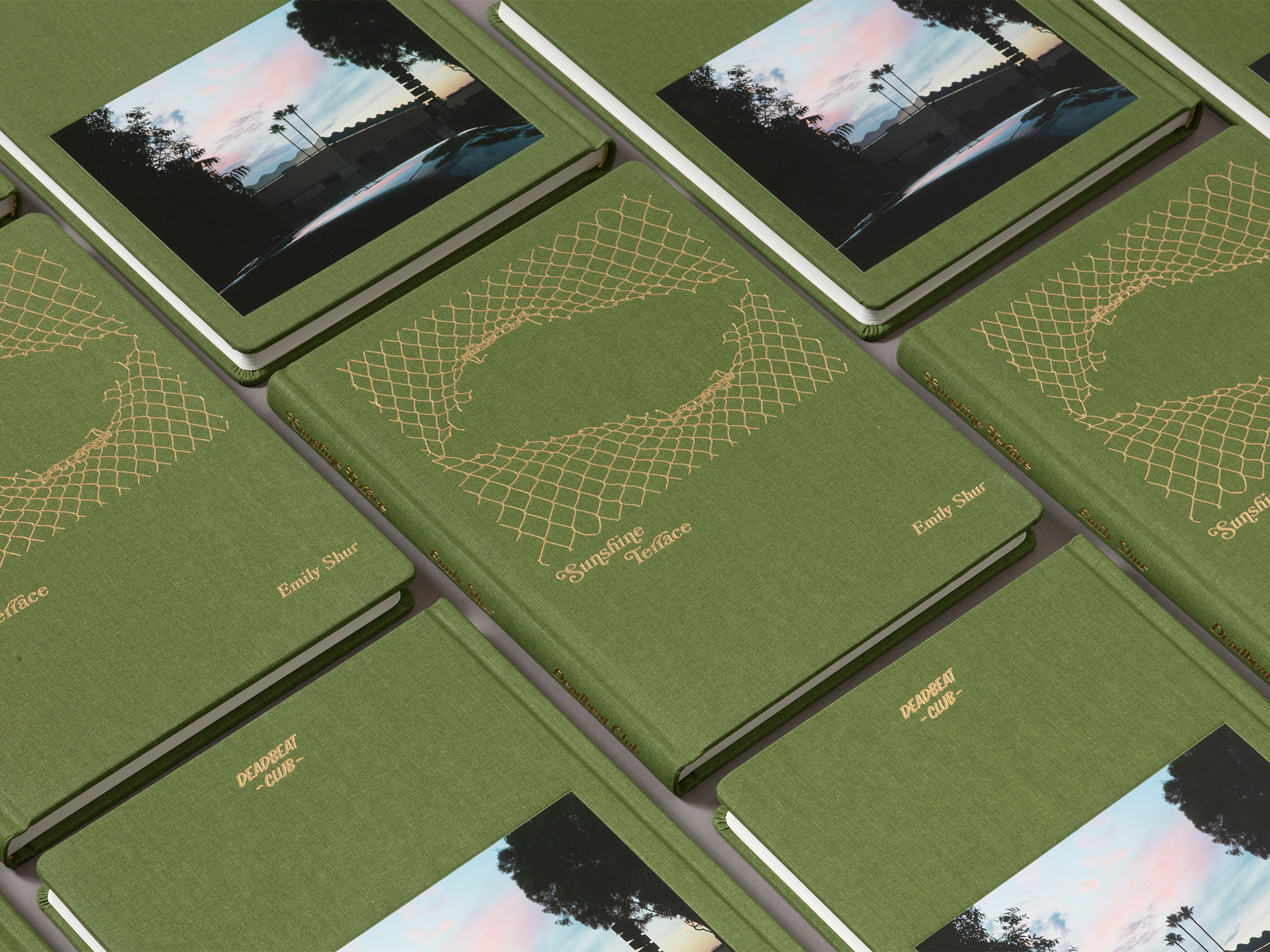Interview 096 • Aug 6th 2025
- Interview by Lou Noble, portrait of Emily Shur by Lou Noble
About Emily Shur: Sunshine Terrace
Emily Shur was born in New York City, raised in Houston, and now calls Los Angeles home. Her vibrant, conceptual style runs through a diverse body of work—celebrity portraits, global campaigns, and personal projects alike—always with a distinct point of view. A winner of the ADC Young Guns early in her career, Emily’s photographs have appeared in Milk and Honey, Photographers’ Sketchbooks, and multiple editions of American Photography. Her first monograph, Super Extra Natural!, chronicled over a decade of photographing in Japan. Her second book, Sunshine Terrace, released by Deadbeat Club in Spring 2025, turns her lens closer to home. Her work is held in the permanent collection of the Whitney Museum and has been exhibited at institutions including the National Portrait Gallery in London, the MFA Houston, and the ICP.
Links
Foreword
There’s a quiet kind of photography that doesn’t demand your attention—it draws you in, asks you to linger. Emily Shur’s new book operates on that frequency. Known for her portraits, Shur now turns her lens toward the overlooked and the oddly poetic: the places and objects people leave behind, the moments most of us pass by.
This work, made over several years in and around her Los Angeles neighborhood, shifts the spotlight from personality to presence. It’s full of what Shur describes as “questions without answers”—unusual pairings, subtle repetitions, compositions that hum with something just beneath the surface. Eyes appear where you don’t expect them. Shadows carry weight. Shapes recur like fragments of a dream.
In this conversation, Shur reflects on making a book that feels more like a sketchbook than a statement—looser, more intuitive. She shares the pleasure of sequencing, the trust required to edit with others, and the quiet revelations that come from photographing the same streets until they start revealing themselves.
What follows isn’t just a conversation about a book—it’s a portrait of process, of seeing, and of the strange beauty that lives just outside the frame.
This interview has been edited for clarity and content.
Interview
Why a book now?
Why a book now…well, it was ready, it was completed.
You’d had different ideas for a book, a few ideas percolating. Why this one?
Yeah. This I’ve been working on for years. I didn’t necessarily start shooting it specifically for the purpose of the book it has become, but I began taking pictures just out of my usual practice of taking pictures, and started to like some of them and started to think about how they work together.
I eventually decided to make a little more of an effort in terms of, you know, an edit and a sequence, and then talked with Clint and Alex, who are the publishers and my friends, and asked them if they thought it could be something. And that was almost a year and a half, two years ago when that conversation started, so that’s just how long it has taken to get it to be an actual book.
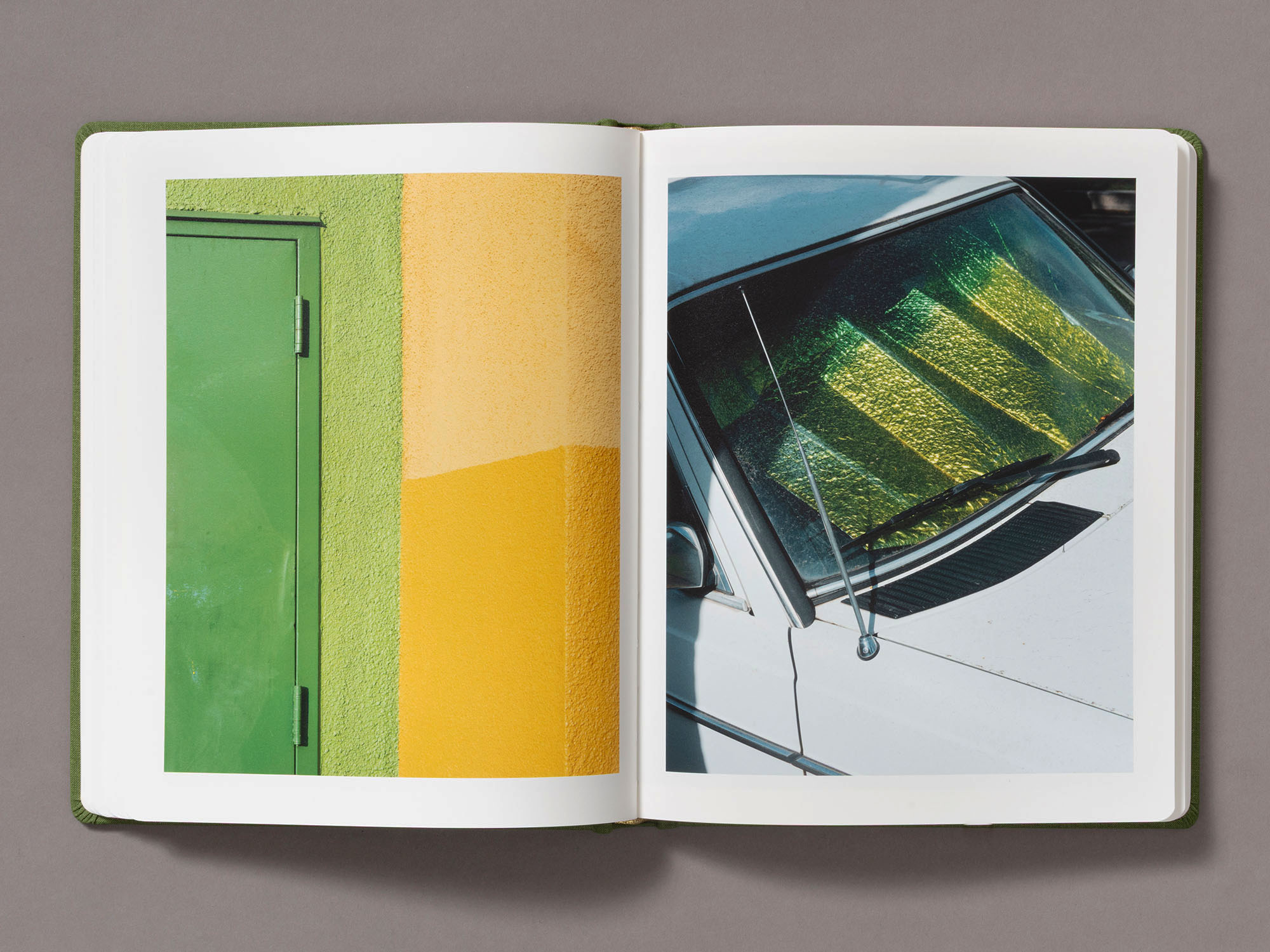
Here’s the main question I have. Your career is all portraits.
Ehh, sure.
I mean, right, like…
I wouldn’t say it’s all like…
It’s people!
Yeah, it’s people, it’s mostly people. I don’t know if…I guess there’s different types of portraits.
It’s people…but both of your books are people-less experiences.
People-less…
Do you see a significance in this?
Oh for sure. When left to my own devices, that’s generally how I like to experience photography and that’s how I naturally see things and make pictures of things. That’s how I put elements together in a frame. When I shoot people, it’s just adding another element into the frame. And then of course there’s the added personality/interaction element with people, but if I had something I was interested in that involved people, in terms of my own work, shooting my own project or a book project, I would be happy to do that, it’s just that is not really usually find myself wanting to photograph on my own, you know.
I like being quiet! I like looking at things quietly without the outside voices. That’s how I have the most fun taking pictures, that’s how I find my most peace with it, and that’s how I’ve also taken pictures since I’ve been taking pictures, since I was a teenager. That’s always been the way, so…sometimes I get bored by my own work, and you know, it can get a bit repetitive, but I try to not be too hard on myself when it comes to the work I make by myself, I try to just keep going, keep shooting, and really the editing is, I think, what makes the work come alive a bit. At least in this book, it really wasn’t much until the pictures came together and started to interact with each other.
Yeah.
And play off each other, and that’s when it became interesting. I really started to want to make a book. Not just like, oh it’s nice, I’ll make some prints, and hang them on the wall, or whatever. That’s when I think it became much stronger as a sequence and as a group, rather than just disparate, individual.
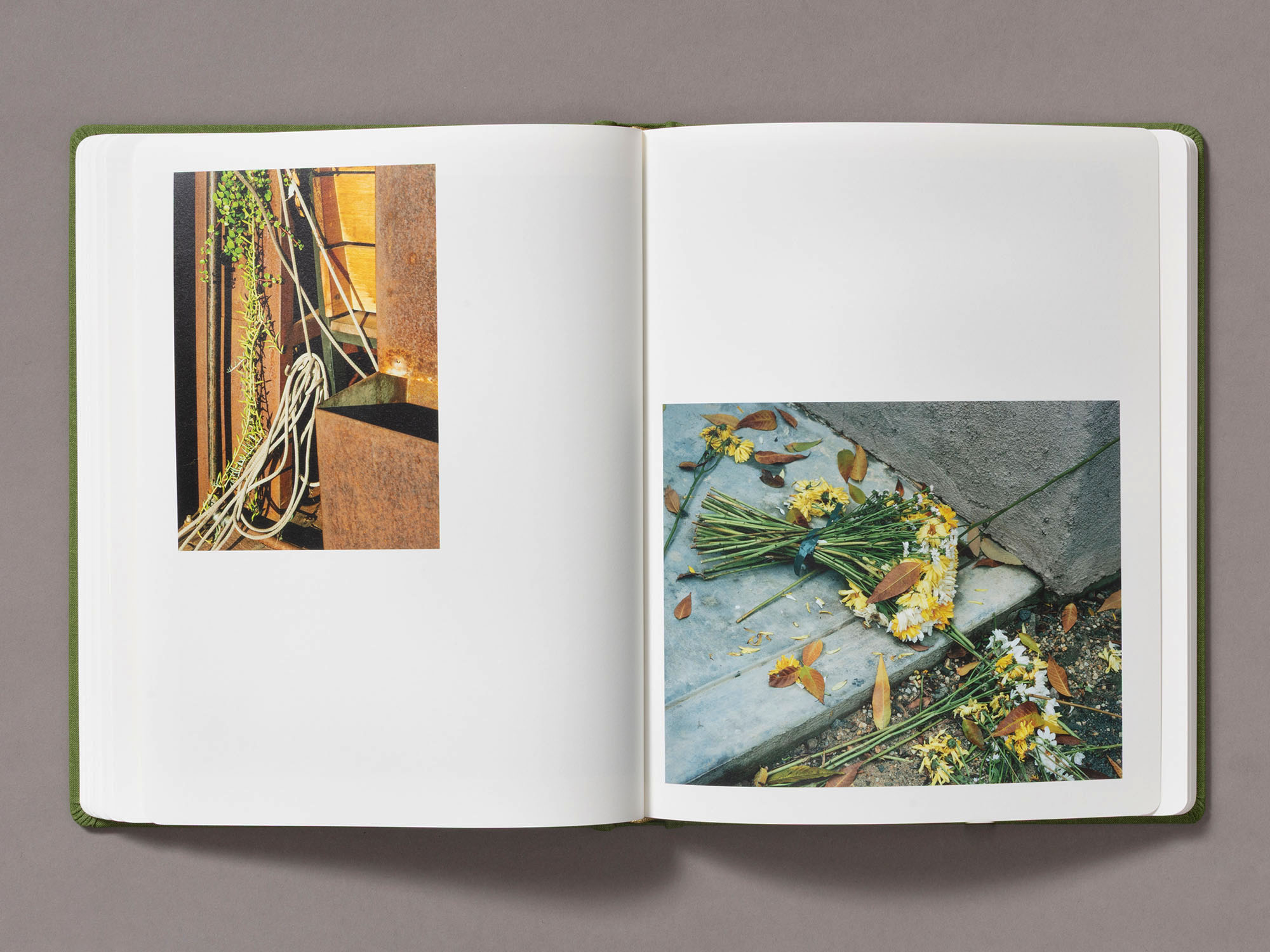
When you see how they’re interacting with each other, you see the elements are carrying over.
Yeah, this goes into this, this flows into this, then you’re going from, you see one thing in one picture, you turn the page, you’re having a similar but different experience seeing something else in the next shot. Or maybe there’s a color story that’s working together. Or just, there’s a lot of repetition in…
Shadow, and composition, and color.
And there are a lot of eyes, looking. And in different ways.
Yeah.
There’s animals that are alive, there’s statues that aren’t (laughter) I don’t think. And there’s shapes that can…
That re-occur.
Right, there’s shapes that re-occur, and I feel like the work in there has, over the few years I made it and worked on the edit, has taken on a few different meanings for me, and I like where it ended up because I think it ended up in a better place than where it started. It’s, when I first made an edit of the work, there was a lot of, they’re still in the book, there’s a lot of places that are photographed more than once. There are places I see all the time, and I’ve taken pictures over the years and those places have changed. And something that was very interesting to me in the beginning of me shooting these pictures was how, you know, time passes and things look different, but it’s the same place, and there’s this slow change and evolution, but it’s just the same shit!
Ha!
It’s like, yup, now this is that. And now it’s that, and now it’s that, but it’s still this field of trash that nobody’s really paying attention to, but it’s going through its own changes, its own evolution.
You know, I’m a portrait guy, so I was curious about how well I would respond to this book. But all those connections were very clear.
Awesome.
And very strong early on.
That makes me very happy.
Was that fun, searching within the body of work to find those connections?
Yeah, it was fun. It is fun. It’s a very playful process that I really need in my life, you know, I need to not be too serious about what I’m showing. We have enough of that in my work life as a photographer, where you might want to show an outtake, but that’s a little too spicy for the advertising crowd.
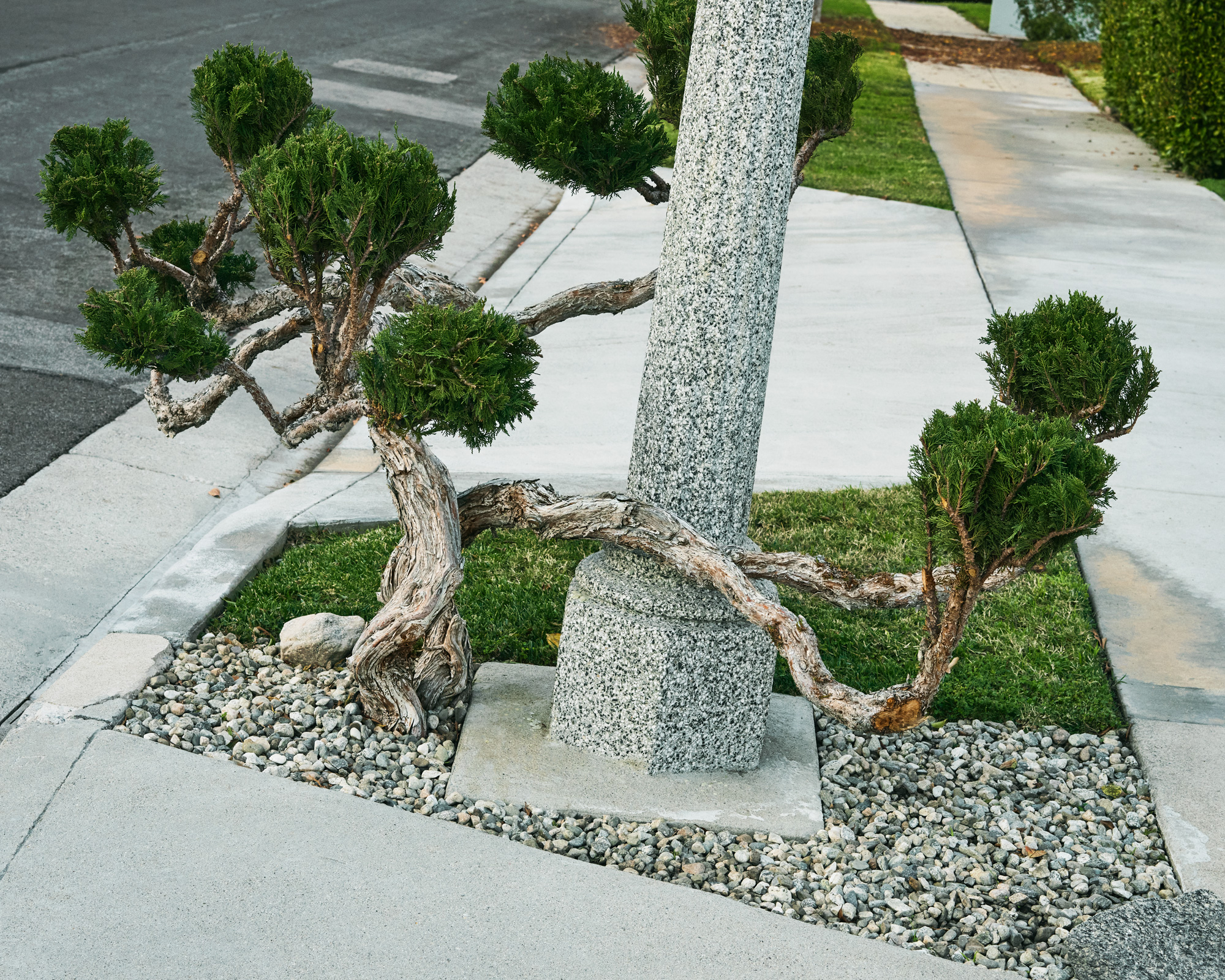
It’s more calculated.
It is, way more calculated. And this process of editing and sequencing is really way more playful and you’re experimental, you’re just trying things. And your brain is making associations and some of those are based on shapes, some of those are based on color, some are just based on a vibe, and it just is so interesting how it can just be so clear sometimes. Like “oh, this goes with this.” But you know, they’re just two images that were shot at totally different times and places, but then you see it all laid out in front of you.
They click together.
Right. You see a bunch of prints on a table, you just start to pull things together and things start to gravitate towards each other. And that process is so fun, I love to do it with other people’s work.
I feel like that is actually a really fun exercise, make connections with pictures and see what speaks to what, and what they’re saying, because it can change both pictures, you know, when they come together, and that’s really interesting, too. On their own, maybe you don’t see certain shapes, or certain details, but then when it’s next to a picture that brings those out, you’ve really changed how you see…
When they share like certain qualities, or attributes, they both are highlighted.
Yeah, and I really like that.
How many photos did you start with?
Hundreds of photos, the pictures in the book are taken from 2020 to 2023.
How long have you been in that house?
Since towards the end of 2018. The body of work started out as my pandemic, you know…
Some people make bread, you made pictures.
And a lot of photographers made pictures and a lot of it is like “I’m at home”…
We got a lot of submissions that were masks on the ground.
I’m sure I took those pictures! We were all stuck at home.
Trying not to die.
And I usually would make pictures when I would travel or like, go elsewhere. I rarely took pictures around LA, pictures that I would do anything with. I would just go on walks and have my phone. There is one picture in the book that kind of was the picture I took with my phone, but then took a real camera…so there’s one picture in the book that I see as the beginning of taking it seriously, where I took a picture with my phone and I was like, “that’s cool, I wonder if that’s still there, I should go take a real picture of that.” I got my real camera and I went up and it was still there and I took a real picture, and I was like, “this is cool.” And so then I started taking my real camera out with me and you know, in the beginning, there’s a lot of pictures that were not interesting in terms of how I might see them now, five years later, a lot of pandemic related imagery, or you know, vaccine graffiti.
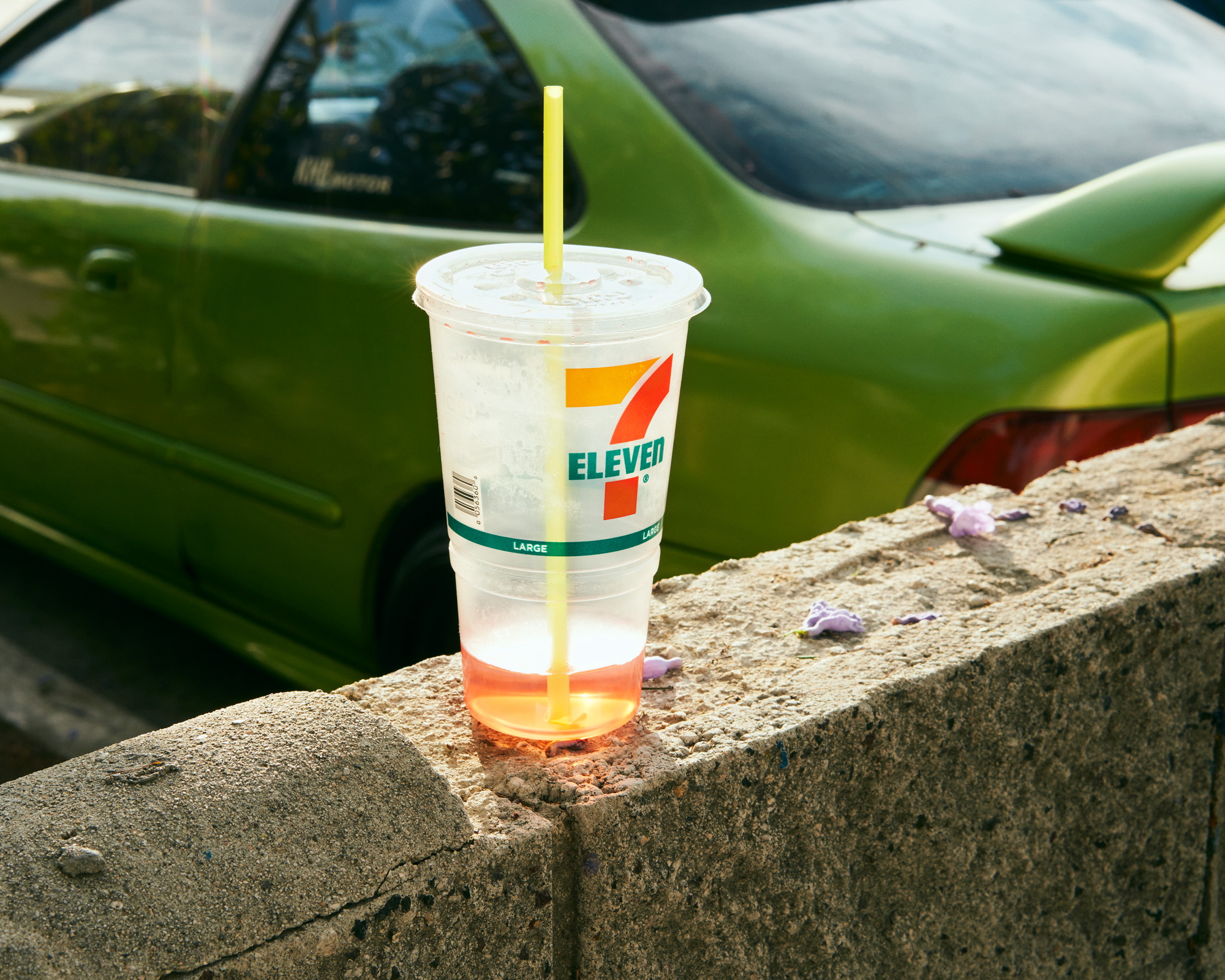
Oh, a testing kit in the gutter!
Right! Yeah, but, in the mix there were images that were more interesting and a little more mysterious and a little bit more like, okay, I liked it a year later, two years later. And just over the course of a few years, I had taken enough pictures that I liked to put together, but I was also getting to know my neighborhood a bit during that time, because I hadn’t lived there very long, and I didn’t know it at all when I moved there, and started to kind of see all of the cracks in the façade of…
An otherwise affluent neighborhood?
Yeah, and it has a bit of a suburban feel. It’s very different from where we lived before, and it’s nice in many ways, but it’s also weird and old and kind of falling apart in a lot of places, and that’s kind of how my house also was…
Haha!
It’s just going through a lot of, you know, I thought this was going to be one thing and it wound up being another thing. And that’s kind of also very representative of my midlife experience, where you’re like, “oh I thought this was going to be one thing, and it’s kind of…” I started to become more interested in the things I would see that had a bit more, there were more questions being asked than answered. What’s happening here, why is this here. Or things that there could be, there’s got to be a story behind this, but I don’t know where it is. I want to find images and pull together an edit of pictures that ask those questions, and there are these mysterious elements, and some elements that break the façade of how…
The neighborhood is perceived.
Yeah, initially the book, in my mind was called “Valley Girl.” And the publishers were not into that.
Ha!
We edited many times, and eventually I came to realize, yeah, it’s not specifically about the valley, it’s not a book about the valley. It’s more Twin Peaks, to me, than it is Los Angeles. It’s not a real place. So that’s ultimately where it landed, and rightfully so, not about a specific place, or this neighborhood in Los Angeles, it’s more about my experience. I feel like we landed in a great place, I completely accept that they vetoed “Valley Girl.”
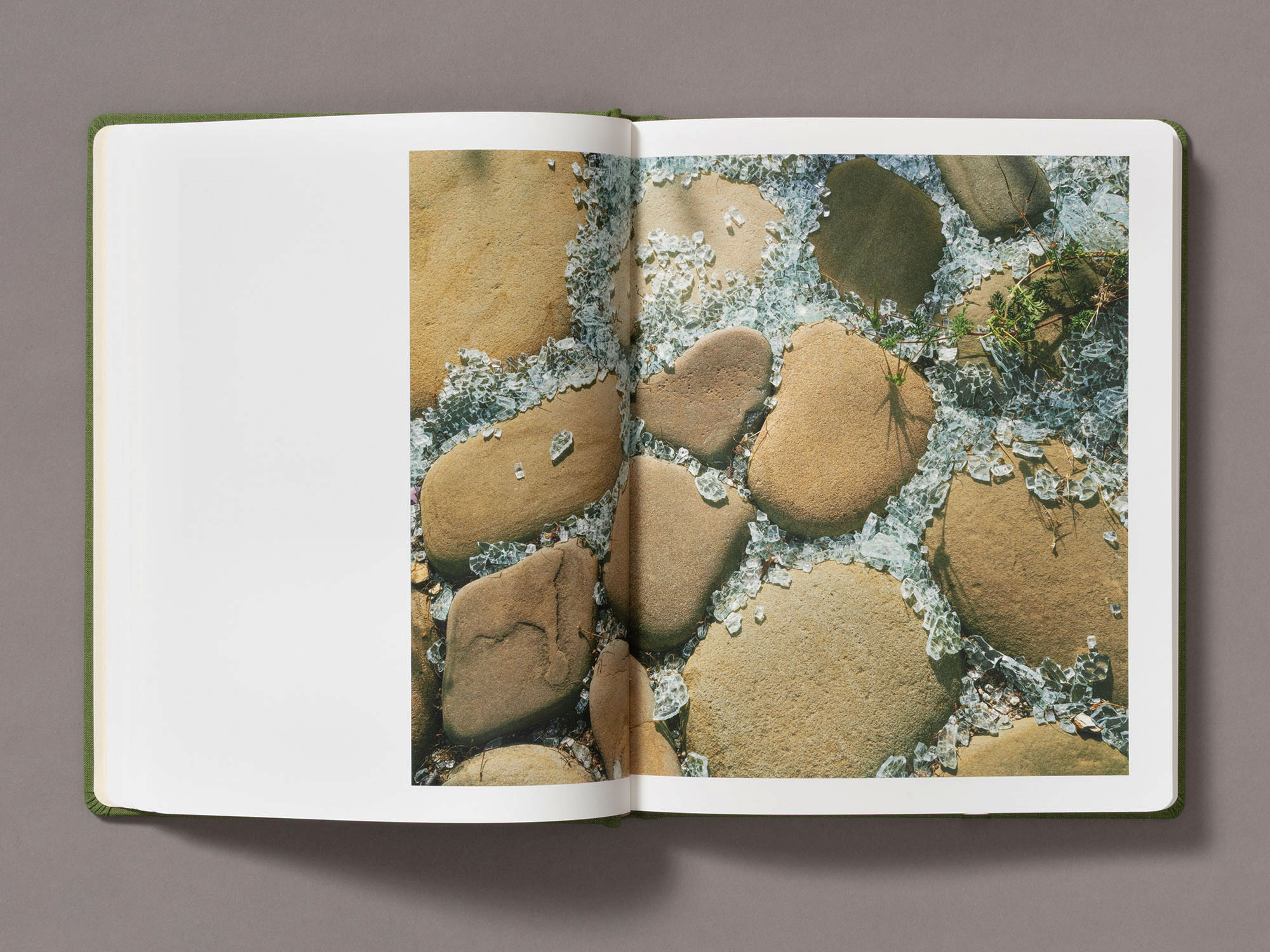
Something you touched on, there’s very much this sense of mystery.
Mmm.
The photos seem to be asking, “why is this here?”
Right.
You’re photographing it to highlight, “why is this here in this way?” I don’t think I have a book on the shelf that’s like that, that actually, where that is the impetus for an image.
Yeah.
The idea that so much of the book is tied together, not just in those compositional elements, or color or vibe, but so many of them are asking, “why is here, why is this like this.”
Yep. When I see other photographers who make similar pictures, it’s really about being there, putting yourself in the situation where you’re going to find things, you’re there to find a potential thing that, the next time you’re there, it’s not there. It was just there that one time.
Where you get this sense that this is ephemeral.
Yeah, I’m only seeing this right now, in this moment, I don’t know why it’s here. Nothing in the book is put there, or…
Staged.
Yeah.
There’s an element of bearing witness.
Right, right, yeah! I think that’s part of the work I really really love, photography I really love, is when I can see, how the photographer sees the world, it’s a point of view thing.
Yeah.
Some of my favorite photographers are the ones where I’m like, that is how I would love to think that I would see it, too. Where if I was in a situation, I would put myself in a place where I am able to see things, and a lot of that for me is being alone, being in a place in my head where I’m looking. I’m not talking to someone, I’m really just looking around and trying to see, and sometimes you don’t see anything. Sometimes there’s just nothing to see, a lot of times there’s nothing to see. And I think in the situation of this book, I started to become interested in the fact that I walk the same walk, or one of maybe two or three routes, every day, with my dog. I see the same houses, the same mailboxes, the same, you know, it’s so boring.
Haha!
So boring, and just days go by. And then one day, this house is painted a different color, and you’re like, “oh, now every day looks like this, this is now part of my monotonous ever day walk. And I started to be interested in changes that I saw, and can I make that interesting photographically. Can I really see and photograph things that make pictures that I like in an area where there’s really on the surface, not a lot going on visually. There’s a Walgreens, there’s just not…it’s not a typical place I would choose to photograph.
Right.
But that’s where I was and in 2020, that’s where we all found ourselves. So I started to try to make that interesting for myself, and then it did get interesting for me, and it made me want to explore a little more, see what I could find, and I have the time, and I have a camera and I love to walk, as you know!
What camera were you walking around with?
Well it changed throughout the years…started out with a Sony A7R. Then I went, sold that, eventually got the Sony A1. Then I got a Fuji GFX100.
That’s the medium format, right?
Yep, so there’s all three of those cameras represented in the book. This is the first body of personal work I’ve ever shot digitally.
Your previous book was all medium format film?
Yes, and I still shoot film, but it was born out of necessity, because of how the work was shot in the beginning. The lab was not open, and I had no real idea in the beginning that this was going to turn into something.
If I was like, “I’m going to make a book,” I probably would have shot film. But it wasn’t like that then, at that moment. I like those cameras.
Right.
I don’t dislike them. And I did all the color work myself, making the pictures feel like my pictures is important, and that’s a big part of whether or not I like the pictures. I kind of don’t care that they’re digital or this or that. So yeah, three cameras.
Do you see any parallels with your Japan book?
For sure. I mean, I think it’s the same general point of view, with the same headspace. Exploring, discovering, looking. I like that a lot, most of the pictures in this book are a bit more abstract, I’d say. They’re less showing a landscape or a you know, a scene. I think it’s a little more intimate.
It feels more pointed. Where it’s like, I want you to see this specifically, whereas…
Super Extra Natural!
Was more scenes, more expansive in a way. This is more like, I want you to see this specifically.
Yeah, mhmm. I see that, as well, and I remember when I started to think about this book being a book, I thought, “I want to make a small book.” While I love Super Extra Natural!, I love that book, it is a big book, it’s got a lot of pictures in it. And this to me felt a little bit more, I don’t want to say a journal, but it’s a little bit like notes as opposed to…
I enjoyed them both, this feels more playful, fun, because it’s really an experience of moving through the book.
Yeah. I like that you said it’s playful, because it totally is for me. There’s silly, stupid things in there, and I am a silly person, and there’s some…I rarely get high, but it’s like very stoney.
This is definitely the part that you’re going to be like, can you take that out.
Ha!
That, and all the swearing.
But it has a lot of stoner-thought elements in there, because that is how my brain works, despite my…
Sobriety?
My practice, I mean hey, it’s fun to sit there and put pictures together and you’re like, yeah!
“Bro, what if these two went together?”
Look they’re having fun together! I feel like the first book was a Book, I had wanted to make that book for 15 years, you know, it was a bucket list item.. I wanted to publish a book of my photography, it was such a big deal to me. And I wanted it to be perfect, and I love how it turned out. I love everything about it. This, to me, was a bit more of a second child, you know, like less precious about…
Right, I’m going to do it different.
Right, I want to just put my mind on the thing, you know.
Yeah, make sure it’s alive.
Haha, yes, it felt a bit more like, I had a bit of a vision for it, once I had enough photos to start having a vision for it, and then the vision got honed with the help of publishers Clint and Alex, we edited together, and eventually came up with the final edit together. You know, there were pictures I liked that didn’t make it, there were pictures they liked that I didn’t like that didn’t.
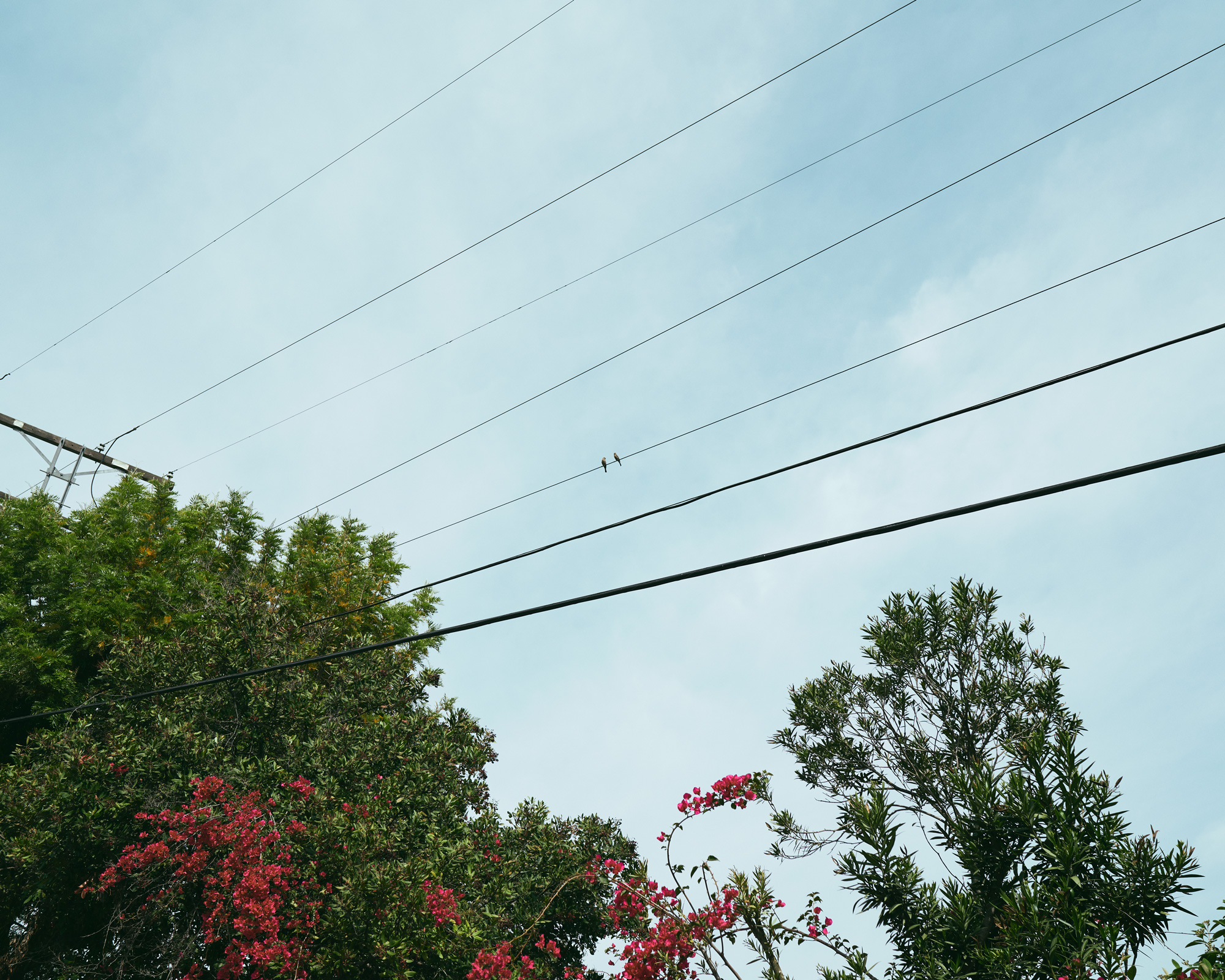
What do you think they brought to the table?
Well, I usually don’t like to show, I guess projects, I don’t love that word because I don’t really shoot in a project form, but for the purposes of this conversation I’ll say “project.” I don’t really like to show projects to too many people at that stage, I feel like you need a couple strong eyes, and beyond that, it gets a little complicated or less helpful.
What are you looking for in a strong eye?
I think, well, opinions, strong opinions. And an understanding of the type of work we’re looking at, you know, it’s not a book of portraits, like, “ugh there’s not enough people here!”
Haha!
You have to understand what we’re going for, and I initially brought a big stack of prints to Clint and he was like, “there’s way too many pictures here!” “Yeah, I know!” He had a process of how to begin an edit of that size, and it was an interesting process that I hadn’t used before. You have a whole bunch of pictures, where do you start, what do you do. What are you building first. So that was helpful to get his thoughts, we had to start somewhere. And I respected his opinion, and Alex, his wife, are two people whose opinions I respect and they were really the only people that saw the work during this whole process, I showed to Isac (Emily’s husband) but that was it.
And I have strong opinions about my pictures.
About everything!
True. I had a go at it in terms of sequence and books, and things that have come out, things have gone in, but it’s sort of, you know, I feel like you have to have the bones of what you want to say in there, and then it’s interesting to hear what pictures people respond to and which ones you might love but nobody else likes.
And then you have to make a decision at that point, do you care what other people are saying or are you going to be like, “I don’t care, I love this one, it’s staying in.” Or are you going to say, “okay, well I can accept that this might not be to anyone else what it is to me, and so I’m going to take it out and hopefully make the group stronger based on that subtraction.” But I really like editing, and I think obviously it makes or breaks the group as a whole, what you choose to include and what you take out, how you present those pictures as a group. So yeah, it was a definitely a joint process. Yeah. Trying to think if there’s another editing…what do I look for in a good editor…you have to have trust, too. You have to trust that person’s taste level.
It’s definitely important to have someone who knows your personality a bit, and you trust their taste level, you can have disagreements and you can have conversations where you think differently about certain images, but at the end of the day, you’re like, “alright, I’m going to file that because I respect your opinion.”
Last question.
Mhmm.
Why make a book?
Why make a book? I love books! I mean, I just had a conversation recently with another photographer who I know and they were trying to figure out…they were trying to decide if they wanted to pursue a publisher for this project or if they just wanted to put it out themselves in a small run, mostly for friends, not trying to make a book and have a book out in the world.
Right.
And they were talking to me about which direction to go in, and I was like, “do you want the book in bookstores, do you want to go to fairs and see the book on tables? Do you want it to be discussed or seen in the world, like the photobook world?” And they said, “no I’m not interested in that.” And I said, “fair enough, I would just do it yourself and not get bogged down with all of the things that come with publishing a book through a publisher.” And then I was thinking, I want all of that, that’s what I want.
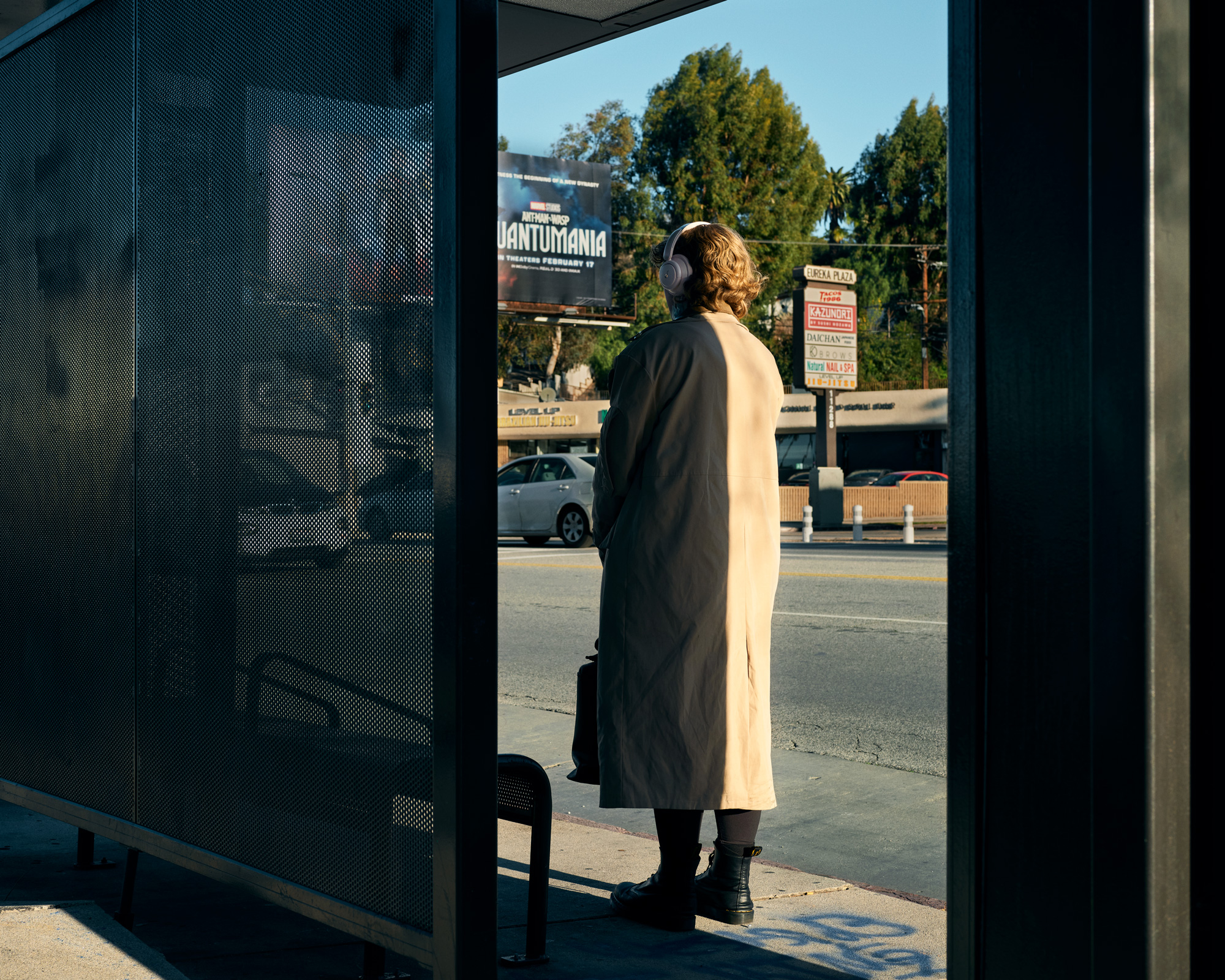
Haha!
When they said, “no, I don’t care about that kind of stuff,” I was like, I care about that kind of stuff. I really love photobooks, I love going to bookstores and the books that I love are cherished possessions of mine. I really do enjoy the book as a medium and as an object, and I love how you can express parts of your work just within the form of an object, of a book. You know, it can be anything. It can be big, small, tiny, you know, cute, masculine, feminine, all those. It could be a million different things but it all that also shifts how people…just like how editing and sequencing can shape how you know, people see your pictures, I think of the object, the book itself can also do that and it can elevate it and just share in another bit of information about how the photographer thinks and what they’re thinking about when they put that together.
So I just love photobooks. I would love to keep making them. Also I love that there’s an ending for the work when you make a book, not that you have to stop taking those pictures, but you’ve completed something and that is a really great feeling, as well, because it feels like there was a punctuation at the end of the sentence and it’s its own thing now.
I can still make another book on Japan if I want, I can make pictures in Studio City forever, all of that can still happen, but it’s just a really nice way to feel like you started something, you finished it. You made it. That is a good feeling, I think.
Sunshine Terrace is available for purchase at Deadbeat Club.
